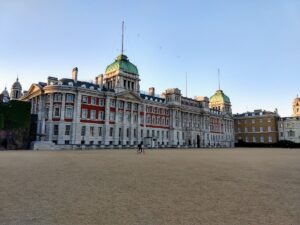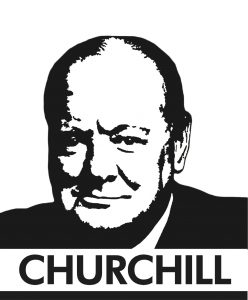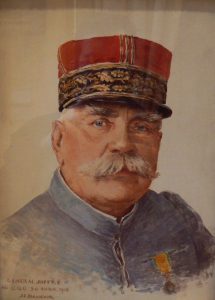
Finest Hour 182
High Hopes and Unbounded Confidence? The Aftermath of the Great Wars
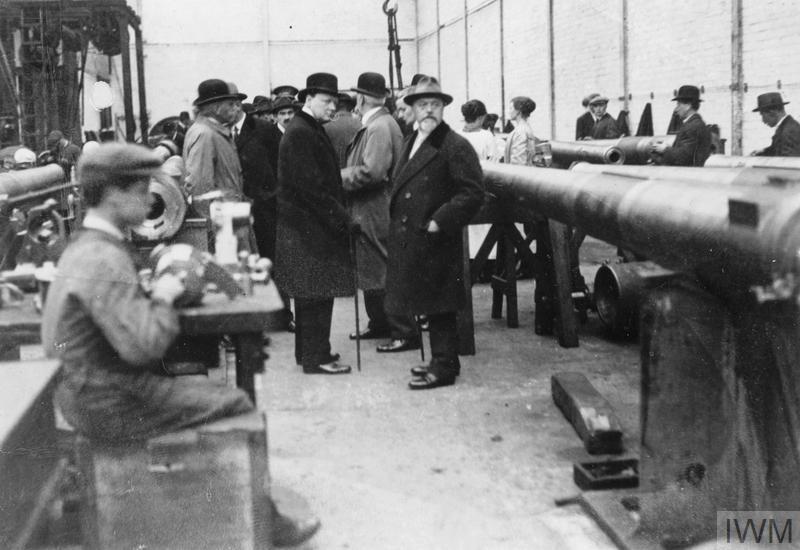
Churchill on an inspection as Minister of Munitions Photo: Imperial War Museum
February 20, 2019
Finest Hour 182, Fall 2018
Page 34
By Tim Riley
Timothy Riley is Sandra L. and Monroe E. Trout Director and Chief Curator of the National Churchill Museum.
I was a minister at the time of the Versailles Treaty and a close friend of Mr. Lloyd George, who was the head of the British delegation at Versailles. I did not myself agree with many things that were done, but I have a very strong impression in my mind of that situation, and I find it painful to contrast it with that which prevails now. In those days there were high hopes and unbounded confidence that the wars were over, and that the League of Nations would become all-powerful. I do not see or feel that same confidence or even the same hopes in the haggard world at the present time.
On the other hand I repulse the idea that a new war is inevitable; still more that it is imminent. It is because I am sure that our fortunes are still in our own hands and that we hold the power to save the future, that I feel the duty to speak out now that I have the occasion and the opportunity to do so.
—Winston Churchill
“Sinews of Peace,” 5 March 1946, Fulton, Missouri

2025 International Churchill Conference
Two documents in the collection of the National Churchill Museum contrast Churchill’s feelings in the aftermath of the two world wars.
The first is a letter dated 10 January 1919, two months after Armistice Day and two weeks after the British general election of 1918. Churchill was completing his successful tenure as Minister of Munitions and moving on to become both Secretary of State for War and Secretary of State for Air. In one of his final acts at Munitions, Churchill wrote to Lieutenant Colonel Sir James Forrest Halkett Carmichael CBE, who served as Assistant Director of Munitions Supply. In victory’s wake, Churchill’s magnanimity is on full display. He expresses his “high appreciation for the ability and devotion which you have contributed to the admirably successful work carried out by the Steel Department during the War.” The letter is a small act of kindness and a typically Churchillian expression of gratitude for valued service rendered.
The Carmichael letter was written the week before the Paris Peace Conference began at Versailles, where Allied leaders attempted in vain to build the framework for a lasting peace in Europe. Though Churchill was critical of the Treaty of Versailles—he believed the punitive terms for German reparations overly harsh—he was a participant with a particular interest in promoting anti-Bolshevik policy.
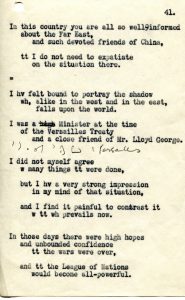
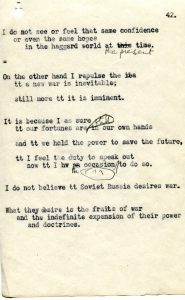 Churchill’s warnings about communism continued later and more overtly on 5 March 1946, when he recalled the Treaty of Versailles in his “Sinews of Peace” speech, commonly known today as the “Iron Curtain” address, at Westminster College in Fulton, Missouri. The near-final draft of the speech, with edits dictated to secretary “Jo” Sturdee the day before Churchill and President Harry Truman departed Washington by train for Missouri, reveals Churchill’s careful recollection of the immediate post-First World War period.
Churchill’s warnings about communism continued later and more overtly on 5 March 1946, when he recalled the Treaty of Versailles in his “Sinews of Peace” speech, commonly known today as the “Iron Curtain” address, at Westminster College in Fulton, Missouri. The near-final draft of the speech, with edits dictated to secretary “Jo” Sturdee the day before Churchill and President Harry Truman departed Washington by train for Missouri, reveals Churchill’s careful recollection of the immediate post-First World War period.
In the Fulton speech, Churchill notes that he was a minister at Versailles (in the final draft he edited out the adjective “high” to describe his new ministerial office) and did not “agree with many of the things that were done.” He recalls, though, the general sense of buoyancy in 1919 when “there were high hopes and unbounded confidence that the wars were over.”
Churchill contrasted the optimism of 1919 with his feelings in 1946: “I do not see or feel the same confidence or even the same hope in the haggard world at the present.” Churchill’s “haggard world” view set the stage for the senior statesman’s stern warning in Fulton. For Churchill, in the aftermath of the Second World War, there could be no room for idealistic fantasies if something concrete were to be achieve—and another global conflict has not been seen or experienced since.
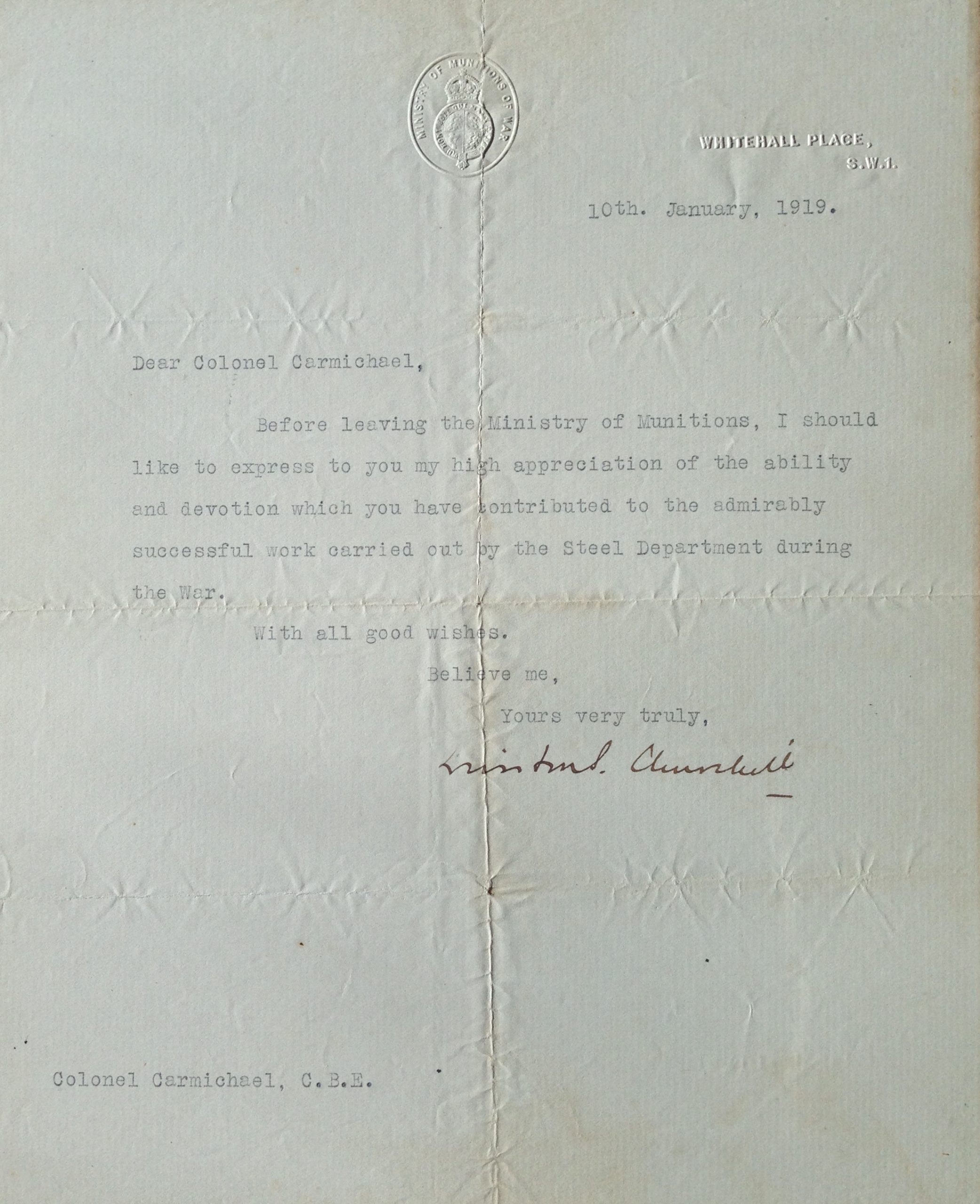
The Carmichael letter is now on long-term loan to the National Churchill Library and Center at the George Washington University in Washington, D.C.
The complete fifty-folio draft of “Sinews of Peace” will be exhibited for the first time outside Fulton in Winston Churchill: A Legacy of Leadership, opening November 17 at the Midland County Library (Midland, Texas).
Subscribe
WANT MORE?
Get the Churchill Bulletin delivered to your inbox once a month.

